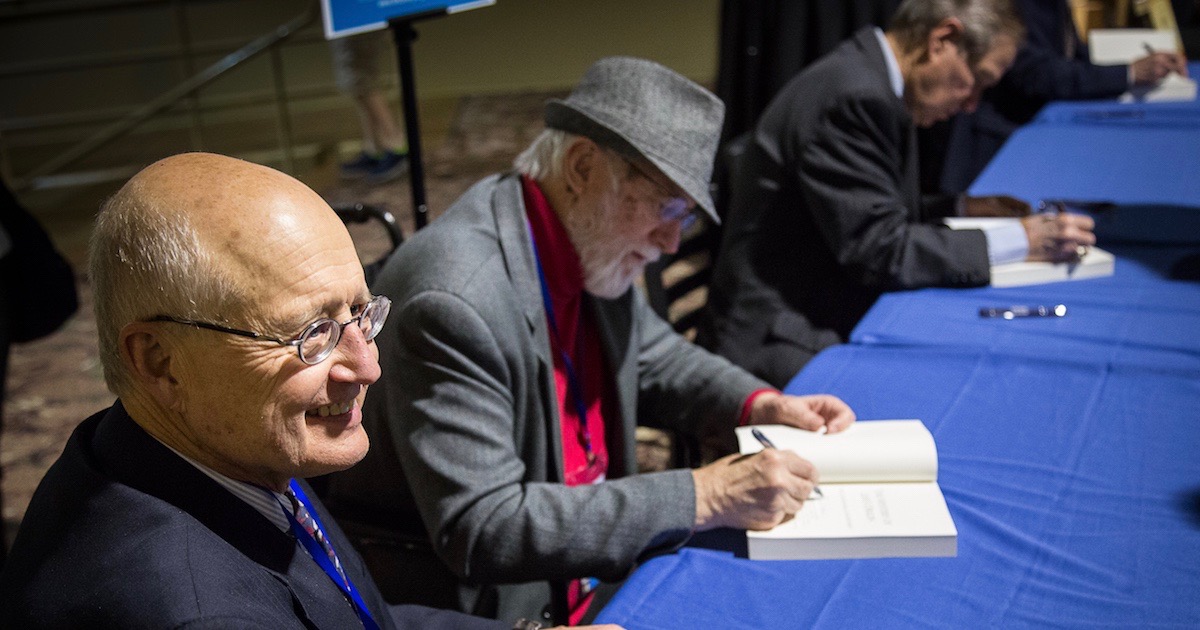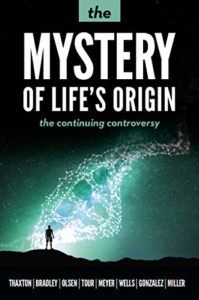 Evolution
Evolution
Crisis in the Chemistry of Origins


Editor’s note: As an alternative to what you are getting pretty much everywhere else in the media at the moment, Evolution News is proud to offer inspiration, pointing to purpose and meaning in life. The profoundest mystery and thus the deepest inspiration is life itself. Discovery Institute Press has just published a greatly expanded edition of the 1984 classic of intelligent design science literature, The Mystery of Life’s Origin. Below is an excerpt from the original introduction by Charles Thaxton, Walter Bradley, and Roger Olsen.
Two monumental scientific reports appeared in 1953, both of which have subsequently received wide acceptance in the scientific community. One was the proposal by James Watson and Francis Crick of their double helical model for deoxyribonucleic acid, or DNA. According to their now-famous model, hereditary information is transmitted from one generation to the next by means of a simple code resident in the specific sequence of certain constituents of the DNA molecule. It had previously been held that the spectacular diversity of life was due in part to some corresponding diversity of nuclear material. The breakthrough by Crick and Watson was their discovery of the specific key to life’s diversity. It was the extraordinarily complex yet orderly architecture of the DNA molecule. They had discovered that there is in fact a code inscribed in this “coil of life,” bringing a major advance in our understanding of life’s remarkable structure.
For Irony’s Sake

Almost as if synchronized for the sake of irony, the other report in 1953, by Stanley Miller, offered experimental support for what has become an increasingly apparent contradiction. Miller offered his work in support of the neo-Darwinian theory of prebiotic evolution. This notion suggested that the fantastic complexity in the molecular organization of living cells might somehow have resulted from nothing more than simple chemicals interacting at random in a primordial ocean.
In 1953, few if any were troubled by the tension between the new insights of Crick and Watson on the one hand and Miller’s results on the other. Crick and Watson were concerned with life’s structure and Miller was concerned with life’s origin. Most observers had an unshakable confidence that these two investigative approaches would eventually converge. After all, young Miller’s announcement of experimental success was just what was anticipated according to the general theory of evolution. Regardless of whether the particular theory of evolution is Darwinian, neo-Darwinian, or something else, an evolutionary preamble to the biological phase of evolution is clearly required. Chemical evolution, then, is the pre-biological phase of evolution in which the very earliest living things came into being. This monumental dawning of life occurred through the variation of natural forces acting on matter over long time spans, perhaps up to a thousand million years, or maybe longer.
The Halls of Biology
In the decades since Miller’s and Crick and Watson’s reports, however, there have been indications that all is not well in the halls of biology. We have gained a far deeper appreciation of the extremely complex macromolecules such as proteins and nucleic acids. The enlarged understanding of these complexities has precipitated new suggestions that the DNA mechanism may be more complex and the molecular organization more intricate and information-filled than was previously thought.
The impressive complexities of proteins, nucleic acids, and other biological molecules are presently developed in nature only in living things. Unless it is assumed such complexity has always been present in an infinitely old universe, there must have been a time in the past when life appeared de novo out of lifeless, inert matter. How can the mere interaction of simple chemicals in the primordial ocean have produced life as it is presently understood? That is the question. The signs do not bode well for the standard answers given, and some investigators are suggesting that our two approaches will not converge.
Read the rest in The Mystery of Life’s Origin: The Continuing Controversy, from Discovery Institute Press.
Photo: (l. to r.) Roger Olsen, Charles Thaxton, and Walter Bradley signing books at the 2020 Dallas Conference on Science & Faith, by Chris Morgan.
